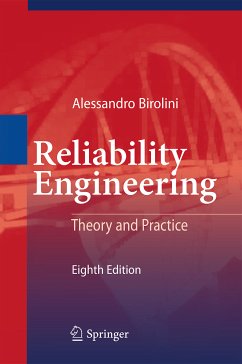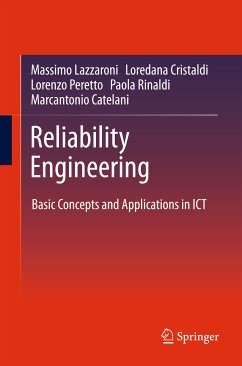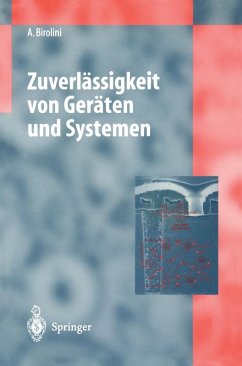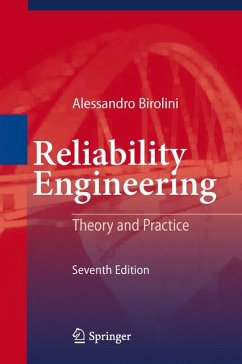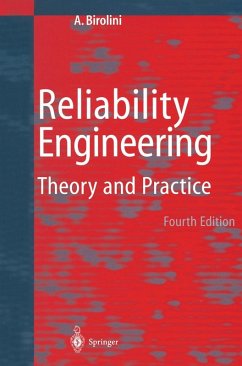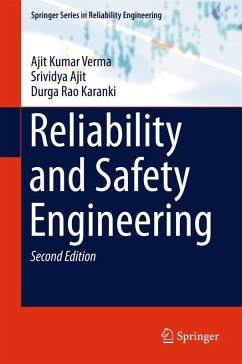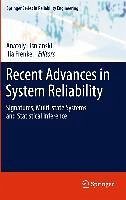
Reliability Engineering (eBook, PDF)
Theory and Practice
Versandkostenfrei!
Sofort per Download lieferbar
120,95 €
inkl. MwSt.
Weitere Ausgaben:

PAYBACK Punkte
60 °P sammeln!
This 5th edition differs from the 4th one for some refinements and extensions mainly on investigation and test of complex repairable systems. For phased-mission systems a new approach is given for both reliability and availability (Section 6. 8. 6. 2). Effects of common cause failures (CCF) are carefully investigated for a 1-out-of-2 redundancy (6. 8. 7). Petri nets and dynamic FTA are introduced as alternative investigation methods for repairable systems (6. 9). Approximate expressions are further developed. An unified approach for availability estimation und demonstration is given for expone...
This 5th edition differs from the 4th one for some refinements and extensions mainly on investigation and test of complex repairable systems. For phased-mission systems a new approach is given for both reliability and availability (Section 6. 8. 6. 2). Effects of common cause failures (CCF) are carefully investigated for a 1-out-of-2 redundancy (6. 8. 7). Petri nets and dynamic FTA are introduced as alternative investigation methods for repairable systems (6. 9). Approximate expressions are further developed. An unified approach for availability estimation und demonstration is given for exponentially and Erlangian distributed failure-free and repair times (7. 2. 2, A8. 2. 2. 4, A8. 3. 1. 4). Con$dence limits at system level are given for the case of constant failure rates (7. 2. 3. 1). Investigation of nonhomogeneous Poisson processes is refined and more general point processes (superimposed, cumulative) are discussed (A7. 8), with application to data analysis (7. 6. 2) & cost optimization (4. 7). Trend tests to detect early failures or wearozdi are introduced (7. 6. 3). A simple demonstration for mean & variance in a cumulative process is given (A7. 8. 4). Expansion of a redundancy 2-out-of-3 to a redundancy 1-out-of-3 is discussed (2. 2. 6. 5). Some present production-related reliability problems in VLSI ICs are shown (3. 3. 4). Maintenance strategies are reviewed (4. 6). As in the previous editions of this book, reliability figures at system level have indices SI (e. g.
Dieser Download kann aus rechtlichen Gründen nur mit Rechnungsadresse in A, B, BG, CY, CZ, D, DK, EW, E, FIN, F, GR, HR, H, IRL, I, LT, L, LR, M, NL, PL, P, R, S, SLO, SK ausgeliefert werden.



